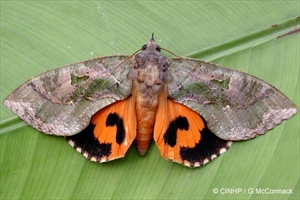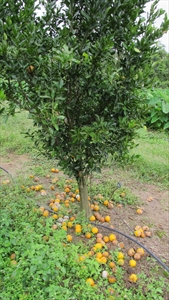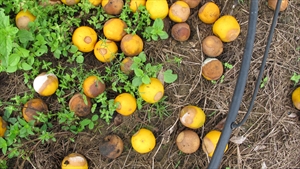- Widespread distribution. Not in Americas. On a wide range of cultivated and wild fruits, including banana, citrus, 5-corner fruit, guava, mango, passionfruit, pineapple and, in outbreak years, capsicum, melon and tomato. An important pest.
- Adult moths do the damage, causing serious outbreaks on citrus (>70%), tomatoes, capsicum, 5-corner fruit. Adults have a 25 mm long, barbed feeding tube to pierce the fruit and suck out the juices. Rots develop from the holes.
- Eggs laid on Erythrina trees, where larvae feed. Note, a gall wasp has decimated trees in some countries, and moth populations have declined.
- Natural enemies: not always sufficient to stop outbreaks.
- Cultural controls: early harvests; fruit bagging, nets.
- Chemical control: not practical; moths have minimal contact with fruit, and sprays near harvest may leave residues. Not feasible to cut down Erythrina trees.






